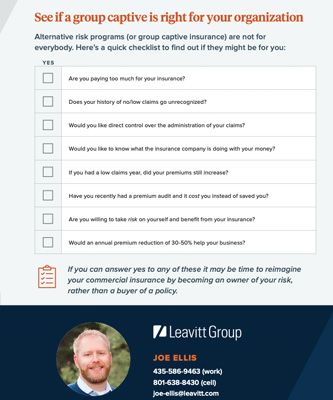What is key-person life insurance?
Key-person life insurance is a policy a business purchases for a crucial employee, usually a physician, specialist, or practice manager. If that person passes away, the practice receives a payout to help cover financial losses, maintain operations, or find a replacement.
Why does my practice need key-person life insurance?
For small healthcare businesses, losing a key person can mean a significant drop in revenue, disruptions in patient care, and even the potential closure of the practice. Key-person insurance provides a financial safety net, allowing the practice to weather the loss and continue serving patients.
Who qualifies as a key person?
Not everyone in a practice should be covered under key-person insurance. It’s designed for individuals whose sudden loss would create significant financial and operational impacts. These are people like:
- Lead physicians or specialists – If the primary medical provider in your practice passes unexpectedly, patient volume and revenue can drop significantly.
- Practice owners or partners – If a co-owner passes away, their financial stake in the practice may need to be bought out or restructured.
- Practice managers – A highly experienced practice manager keeps the office running smoothly, handling everything from billing to patient scheduling. Losing such a vital team member could lead to months of significant operational challenges.
How much key-person life coverage does my practice need?
The “right” amount of coverage varies depending on the specific needs of your practice. When you’re determining the appropriate level of coverage, you should consider several factors, including:
- Revenue impact – How much revenue does the key person generate directly? A physician, for example, brings in a certain amount per year based on patient load.
- Replacement costs – What will it take you to recruit, hire, and train a replacement? Doing so can take months and often costs tens—even hundreds—of thousands of dollars.
- Outstanding loans and obligations – If your practice has loans or financial obligations tied to the key person, your coverage amount should be enough to help manage or finish paying the financial obligations off.
A general rule of thumb is to carry coverage equal to one to two years of the key person’s salary or revenue contribution. However, working with an insurance advisor can help determine the amount you need for your practice’s unique risks.
What is the difference between term and permanent key-person life insurance?
When purchasing a key-person insurance policy, you can choose from two main options: term life insurance and permanent life insurance.
- Term Life Insurance – Covers a specific period (e.g., 10, 20, or 30 years) and pays out only if the key person passes away during that term.
- Permanent Life Insurance – Provides lifelong coverage and a cash value component that grows over time. Some businesses use this as an asset for borrowing or funding buyouts later down the line.
For many small healthcare practices, term life insurance is the preferred option because of its flexibility. However, if you want a long-term option with an investment component, permanent key-person life insurance is an option.
Final Thoughts
Key-person life insurance is an essential safeguard for any small healthcare practice. If you find yourself facing unexpected loss, it ensures the business’s financial stability and continuity. If your practice relies on one or two key people, having the right policy in place could mean the difference between staying open and closing your doors.
Not sure what coverage your practice needs? Reach out today to discuss your options and get a customized plan that protects your business and your patients.





